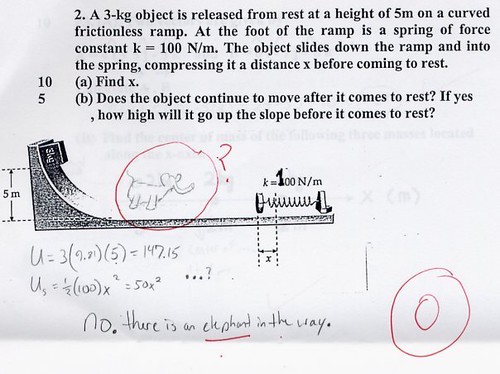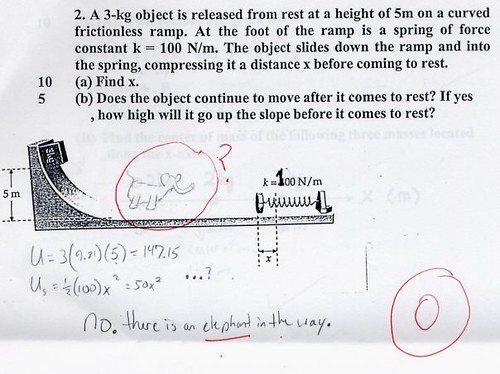|
|
 Re: A force/friction physics problem Re: A force/friction physics problem
 Originally Posted by martindcx1e
Can anyone help with this?
A 420 g block is at rest on a horizontal surface. The coefficient of static friction between the block and the surface is 0.800, and the coefficient of kinetic friction is 0.230. A force of magnitude P pushes the block forward and downward. Assume the force is applied at an angle of 23.0° below the horizontal.
(a) Assuming P is large enough to make the block move, find the acceleration of the block as a function of P. (Use P as necessary and round numbers to the third decimal place.)
a(P) = ?
In order to make the block move from rest, the force has to exceed the static friction force. Static friction comes in at Fs = (.42*9.81 + Psin(23))*.8.
When this force is exceeded, the firction force drops to Fk = (.42*9.81 + Psin(23))*.23 When this occurs, the sum of the forces in the X shape up to be .42* a = P*cos(23) - Fk. Solve for a
(b) If P = 4.12 N, find the acceleration and the friction force exerted on the block.
First check to see if the P is large enough to overcome Fs. Fs = 4.584. Px = 3.792 N. So the acceleration = 0, and equal and opposite forces says the force of friction = 3.792 N.
(c) If P = 8.24 N, find the acceleration and the friction force exerted on the block.
Fs = 5.871 N, Px = 7.585 N. Force of friction = Fk = 1.688 N. a = 14.04 m/s/s. Might wanna check my math
For A I have to set the net force equal to m*a right? If so then I got n = mg + Psin(-23) for the vertical forces and for the horizontal forces I'm not sure if I'm supposed to use both the force of static friction and the force of kinetic friction in my equation or just one or the other.
The force of static friction only comes into play when the block is not moving and is usually much higher than the force of kinetic friction. Until the force applies exceeds the static frictional force in X, the block will not move. Once it starts moving, it will only resist by the force of kinetic friction.
|




 Reply With Quote
Reply With Quote













